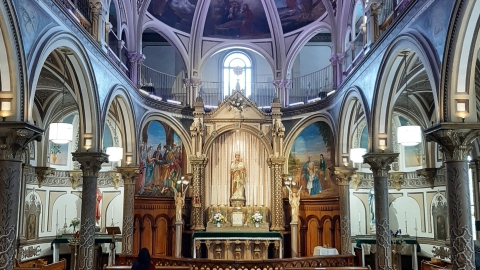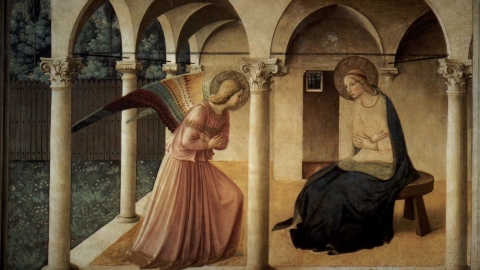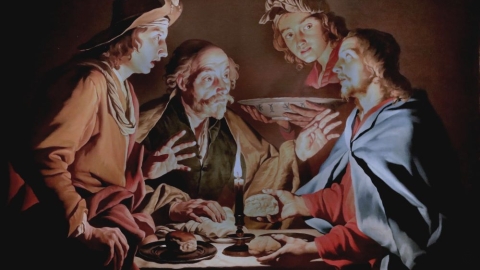“Fratelli tutti” for Dummies

Tombeau de saint François sur lequel le Pape a signé son encyclique
The encyclical “Fratelli tutti [all brothers], on Fraternity and Social Friendship” was published on October 4, 2020. The following
The Vatican media service believed it was necessary to issue eight explanatory tables with it, because if Pope Francis’ message of fraternity is “very clear and challenging (sic),” according to the Swiss agency cath.ch, “the text is nevertheless quite dense, sometimes impenetrable,” dare one say confused…
Hence eight “infographics” that put the clear-obscure thought of the reigning pontiff within the reach of good people. It’s “Fratelli tutti for dummies,” with many sketches, arrows, and pithy formulas like, “the church builds bridges, breaks down walls, sows reconciliation.”
In fact, the pope’s encyclical is based on a thought that has characterized his teaching since the beginning of his pontificate. According to him, “the model is the polyhedron, which reflects the confluence of all the partial elements that, in it, retain their originality.” (Evangelii gaudium, November 24, 2013); “neither the global sphere that annihilates, nor the isolated bias that makes it sterile” (Ibid.). No walls but bridges, no borders but openings.
This idea is found in Fratelli tutti. There is talk of “a social friendship that excludes no one and a fraternity that is open to all” (no. 94) and a “culture of encounter” (no. 30), in which migrants - regardless of their religion - are “a blessing, a source of enrichment and new gift that encourages a society to grow” (no. 135).
Citing the Abu Dhabi Document on Human Fraternity for World Peace and Living Together, which he co-signed with the Grand Imam of al-Azhar, Francis states: “good relations between East [Muslim] and West [Christian] are indisputably necessary for both. They must not be neglected, so that each can be enriched by the other’s culture [and religions?] through fruitful exchange and dialogue” (no. 136).
And he adds personally, “We need to develop the awareness that nowadays we are either all saved together or no one is saved.” Is he talking about eternal salvation? No! But about, “poverty, decadence and suffering in one part of the earth [which] are a silent breeding ground for problems that will end up affecting the entire planet” (no. 137). It’s a low-level salute.
This polyhedral thought - which is intended to be one and multiple, simple and complex, divergent and convergent… - may legitimately seem to be obscure, but the reality it expresses is clear: its “social friendship that excludes no one” practically excludes God, and its “fraternity that is open to all” is concretely closed to Christ. And it is not these two prayers - the interreligious and the ecumenical – by way of rhetorical peroration, that will succeed in persuading us otherwise.
There, no need for infographics. There is no need to draw a picture.
(Source : DICI 401 - FSSPX.Actualités)



